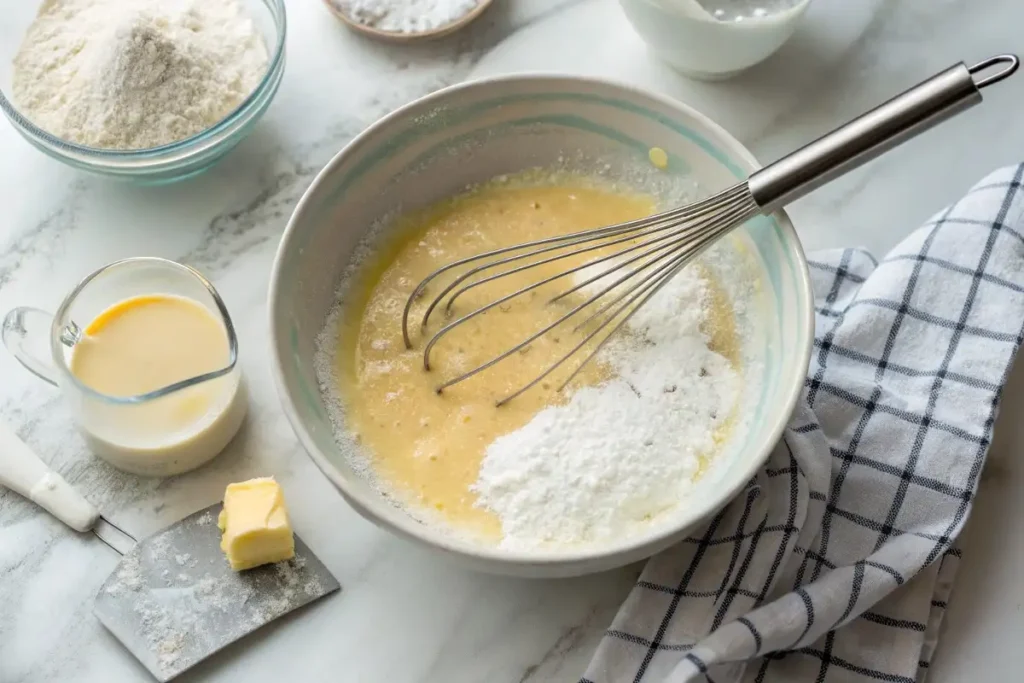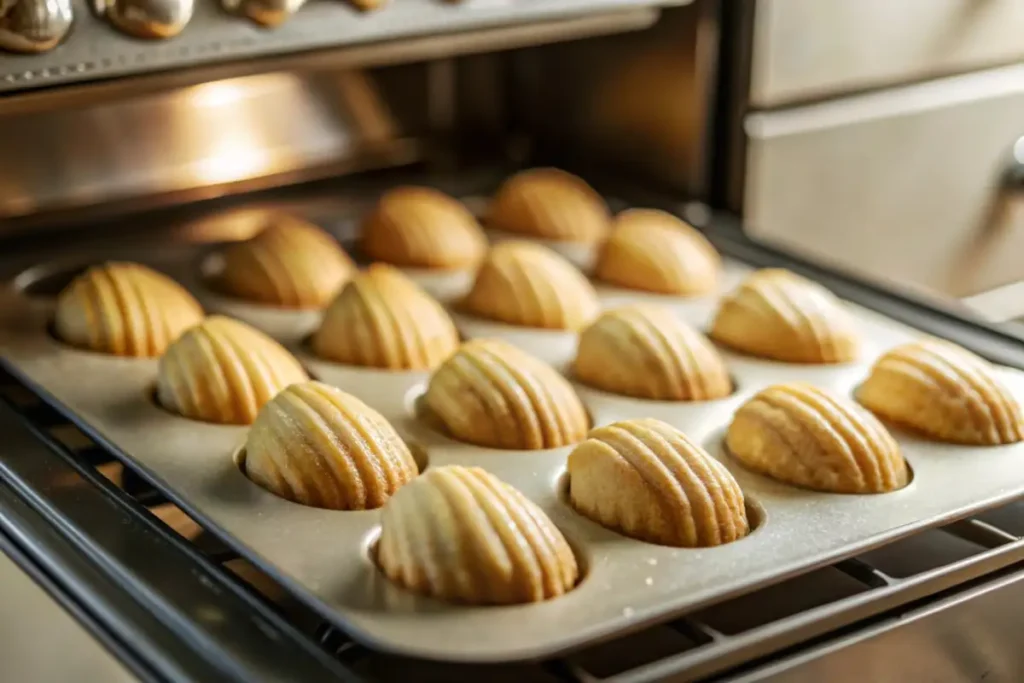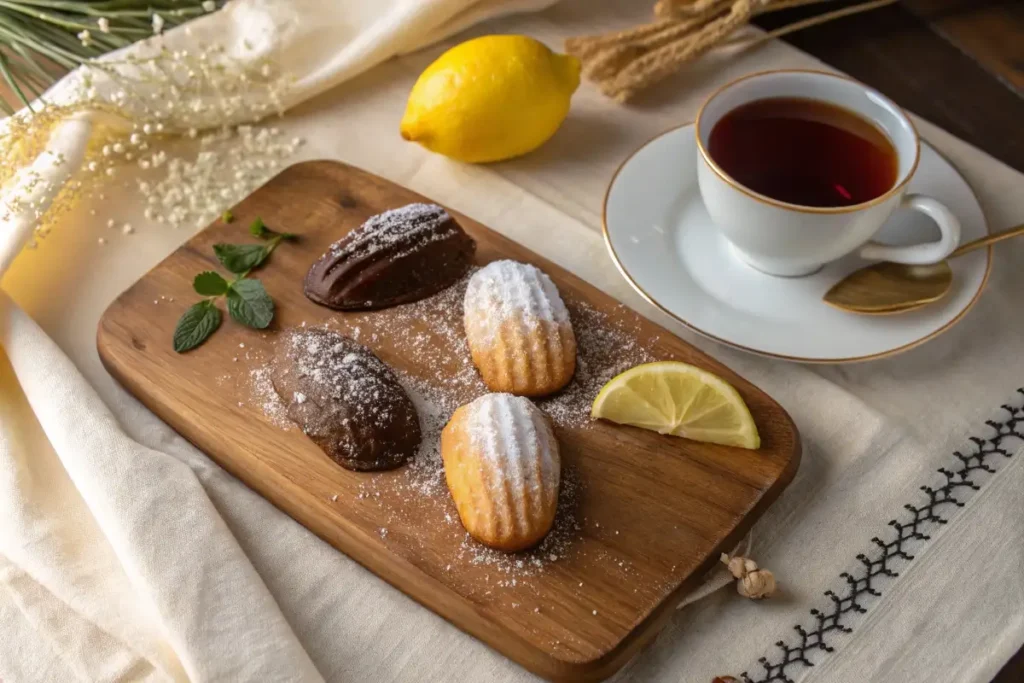If you’re looking for the perfect Madeline cookies recipe using cream, you’ve come to the right place! These classic French treats are soft, buttery, and delicious. While traditional recipes use butter, adding cream makes them even more rich and tender.
In this guide, we’ll explore everything about making Madeleine cookies using cream—from the history behind these classic treats to the best ingredients and step-by-step instructions. You’ll also discover flavor variations, baking tips, and solutions to common mistakes. Whether you’re a beginner or an experienced baker, this article will help you master the perfect cream-based Madeleines every time!
Now, let’s begin with their fascinating history.
Introduction to Madeleine Cookies
The Origin and History of Madeleines
Madeleines have been delighting dessert lovers for centuries. These petite, shell-shaped sponge cakes trace their roots back to 18th-century France, where they were first created in the Lorraine region. Legend has it that a young pastry chef named Madeleine Paulmier prepared these delicate cakes for the Duke of Lorraine, and the name stuck.
The popularity of Madeleines soared when Marcel Proust, a French writer, famously described their taste in his novel In Search of Lost Time. This poetic tribute cemented their status as an iconic French pastry, loved by both home bakers and professional pâtissiers alike.
Unique Characteristics of Madeleines
So, what makes Madeleines stand out from other cakes or cookies?
- Their signature shell shape – Thanks to the unique Madeleine pan, these treats develop a beautiful scalloped exterior that makes them instantly recognizable.
- The perfect “hump” – A well-made Madeleine features a small hump on its back, formed due to the temperature shock when baking.
- A soft, spongy texture – Unlike traditional cookies, Madeleines are airy, light, and slightly crisp on the edges.
Adding cream to the batter enhances these qualities, making the texture even softer and more luxurious. In the next section, we’ll dive into how cream changes the game for Madeleine cookies!
Importance of Cream in Madeleine Recipes
Using cream in a Madeline cookies recipe using cream is a game-changer. It enhances the texture, enriches the flavor, and brings out the delicate qualities that make these French treats irresistible. Let’s explore how cream transforms this classic recipe!
Enhancing Texture with Cream
- Achieving Moistness and Tenderness: Traditional Madeleines rely on butter for richness, but adding cream makes them even softer. The higher fat content in cream creates a velvety crumb, preventing the cookies from drying out too quickly.
- Comparison with Traditional Butter-Only Recipes: While butter provides a rich, nutty flavor, it can sometimes lead to a slightly firmer texture. Cream, on the other hand, adds a smooth, melt-in-your-mouth quality, making each bite more indulgent.
Flavor Enrichment Through Cream
- Adding Depth and Richness: The mild sweetness of cream blends beautifully with vanilla, citrus, and other classic flavors. It softens the sharpness of lemon zest and enhances the warm notes of vanilla, creating a balanced, well-rounded taste.
- Balancing Sweetness and Subtle Flavors: Some recipes can taste overly buttery or dry. Cream helps balance these elements, ensuring a light, delicate texture while keeping the flavor soft and smooth.
By incorporating cream, you’re not just making Madeleines—you’re creating a luxurious French delicacy with a perfect balance of softness and richness!
Essential Ingredients and Equipment
To make a flawless Madeline cookies recipe using cream, you’ll need the right ingredients and baking tools. Using high-quality ingredients ensures the best flavor, while the correct equipment helps achieve the classic shell shape and fluffy texture.
Key Ingredients for Cream-Based Madeleines
- Flour, Sugar, Butter, and Eggs
- Use all-purpose flour for structure, but sift it first to avoid lumps.
- Choose fine granulated sugar for a smooth batter.
- Opt for unsalted butter, which gives you control over the flavor.
- Fresh eggs add richness and help with the light texture.
- Selecting the Right Cream
- Heavy cream or whipping cream is best because of its higher fat content. Avoid light creams, as they contain more water, which can alter the batter consistency.
- Flavor Enhancers
- Classic choices include pure vanilla extract and lemon zest for a bright, fresh taste.
- For a deeper, nuttier flavor, add a few drops of almond extract or a dash of cinnamon.
Necessary Baking Tools
- Madeleine Pan
- The traditional shell-shaped pan is key. A non-stick version is ideal, but if using a metal one, grease it well with butter and flour.
- Mixing Bowls and Whisks
- A sturdy whisk is needed to beat the eggs and sugar until frothy. If possible, use an electric mixer to speed up the process.
- Pastry Brush
- A small brush helps evenly coat the pan with melted butter, ensuring the cookies release easily after baking.
By having the right ingredients and tools, you’re setting yourself up for Madeleine success—ensuring each bite is soft, flavorful, and perfectly baked!
Step-by-Step Recipe for Cream-Based Madeleines

Preparing the Batter
Creating the perfect Madeleine cookies recipe using cream begins with a well-prepared batter. Here’s how to achieve that:
- Mixing Wet Ingredients
- Whisk Eggs and Sugar: In a medium bowl, whisk together two large eggs and 1/2 cup (100g) granulated sugar until the mixture becomes pale and frothy. This step incorporates air, essential for a light texture.
- Incorporate Cream and Butter: Gently add 1/2 cup (120ml) heavy cream and 1/4 cup (60g) melted, cooled unsalted butter into the egg mixture, stirring continuously to ensure a smooth blend.
- Incorporating Dry Ingredients
- Sift Dry Components: In a separate bowl, sift together 1 cup (125g) all-purpose flour, 1/2 teaspoon baking powder, and a pinch of salt. Sifting removes lumps and ensures even distribution of leavening agents.
- Combine Mixtures: Gradually fold the dry ingredients into the wet mixture using a spatula. Be careful not to overmix; stop as soon as the batter is smooth to maintain its airy consistency.
- Resting the Batter
- Chill Time: Cover the bowl with plastic wrap and refrigerate the batter for at least one hour, or overnight if possible. Chilling allows the batter to thicken and develop flavors, contributing to the classic Madeleine hump during baking.
Baking Process

- Preparing the Molds
- Grease and Flour: Preheat your oven to 375°F (190°C). Thoroughly grease the Madeleine molds with melted butter and lightly dust with flour, tapping out any excess. This step ensures easy release and a crisp edge.
- Filling the Molds
- Portioning the Batter: Spoon the chilled batter into each mold, filling them about three-quarters full. Avoid overfilling to prevent overflow during baking.
- Achieving the Signature Hump
- Baking: Place the filled molds on the center rack of the preheated oven. Bake for 8-10 minutes, or until the edges are golden brown and the centers have risen to form the characteristic hump.
- Cooling: Remove the Madeleines from the oven and allow them to cool in the molds for 2 minutes. Then, gently release them onto a wire rack to cool completely.
For more delightful recipes, check out our Classic French Desserts Collection.
Flavor Variations and Enhancements

Classic Variations
- Lemon Zest and Vanilla
- Citrus Infusion: Add the zest of one lemon and 1 teaspoon of pure vanilla extract to the batter. This combination imparts a refreshing and aromatic flavor, enhancing the traditional taste of Madeleine cookies.
- Almond and Chocolate Infusions
- Nutty Notes: Incorporate 1/2 teaspoon of almond extract into the batter for a subtle, nutty undertone.
- Chocolate Delight: For chocolate lovers, replace 2 tablespoons of flour with 2 tablespoons of unsweetened cocoa powder to create rich, chocolate-flavored Madeleines.
Modern Twists
- Lavender and Earl Grey Flavors
- Floral Essence: Gently fold 1 teaspoon of dried culinary lavender into the batter for a delicate floral note. Ensure the lavender is finely chopped to distribute the flavor evenly.
- Tea-Infused Aroma: Steep 2 Earl Grey tea bags in the melted butter for a few minutes before incorporating it into the batter. This infusion adds a sophisticated tea flavor to your Madeleines.
- Seasonal Fruit Additions
- Berry Burst: Fold in 1/2 cup of fresh, finely chopped strawberries or raspberries into the batter. The fruit adds moisture and a pleasant tartness, complementing the sweet, buttery base.
- Citrus Twist: Incorporate the zest of an orange or lime for a zesty variation that brightens the flavor profile.
Experimenting with these variations allows you to customize the classic Madeleine cookies recipe using cream to suit your taste preferences, making each batch a unique and delightful experience.
Common Mistakes and Troubleshooting
Even though baking Madeleines seems simple, a few small mistakes can ruin their signature texture. Let’s go over the most common issues and how to fix them!
Avoiding Flat Madeleines
- Skipping the Chilling Step: One of the biggest reasons your Madeleines don’t develop their iconic hump is skipping the chilling process. The batter needs at least one hour in the fridge—overnight is even better. The cold batter creates a temperature contrast in the oven, helping form the perfect rise.
- Incorrect Oven Temperature: Too high or too low, and your cookies will suffer. If the oven is too hot, they’ll bake too quickly, forming a crust before rising. Too low, and they won’t puff up at all. Stick to 375°F (190°C) for the best results.
Preventing Dryness and Overbaking
- Overbaking the Madeleines: Even an extra minute in the oven can make them dry. Check at the 8-minute mark. They should be golden on the edges and just set in the middle.
- Not Storing Them Properly: Madeleines are best eaten fresh, but if you need to store them, keep them in an airtight container. They lose moisture fast, so eat them within 2 days for the best texture.
A perfectly executed Madeline cookies recipe using cream should be soft, airy, and slightly crisp on the edges—avoid these mistakes to achieve that!
Frequently Asked Questions
Baking Madeleine cookies raises a lot of questions, especially for beginners. Here are answers to the most common ones!
Can I Make Madeleines Without a Special Pan?
Technically, yes! But if you want that classic shell shape, a Madeleine pan is essential. If you don’t have one, try using a mini muffin tin. They won’t have the same look, but they’ll still taste delicious.
How Do I Store Madeleines to Maintain Freshness?
Store them in an airtight container at room temperature for up to 2 days. If you want to keep them longer, freeze them in a sealed bag and warm them slightly before serving.
What Causes the Signature Hump in Madeleines?
The hump forms because of the cold-to-hot oven shock. Chilling the batter is key! A well-preheated oven also helps create the temperature contrast needed for the rise.
Can I Substitute Cream with Other Dairy Products?
Yes! If you don’t have heavy cream, try whole milk or Greek yogurt. However, these will slightly alter the texture, making them a bit less rich and tender.
How Can I Add a Chocolate Coating to My Madeleines?
Dip the cooled Madeleines in melted chocolate and let them set on parchment paper. For an extra twist, sprinkle crushed nuts or coconut flakes over the chocolate before it hardens!
A Madeline cookies recipe using cream is already delicious on its own, but these FAQs help you perfect the process!
Embracing the Art of Baking Madeleines with Cream
Recap of Key Points
Mastering the Madeline cookies recipe using cream is all about balance—choosing the right ingredients, following key techniques, and avoiding common mistakes. The addition of cream enhances both the flavor and texture, making these delicate French treats even more irresistible. From perfecting the batter to achieving the signature hump, every step matters!
Encouragement to Experiment with Flavors
Now that you’ve learned the basics, why not get creative? Try adding citrus zest, nuts, or even chocolate to customize your Madeleines. Whether for breakfast, a snack, or a special occasion, these buttery delights will always impress! Happy baking! 😊

